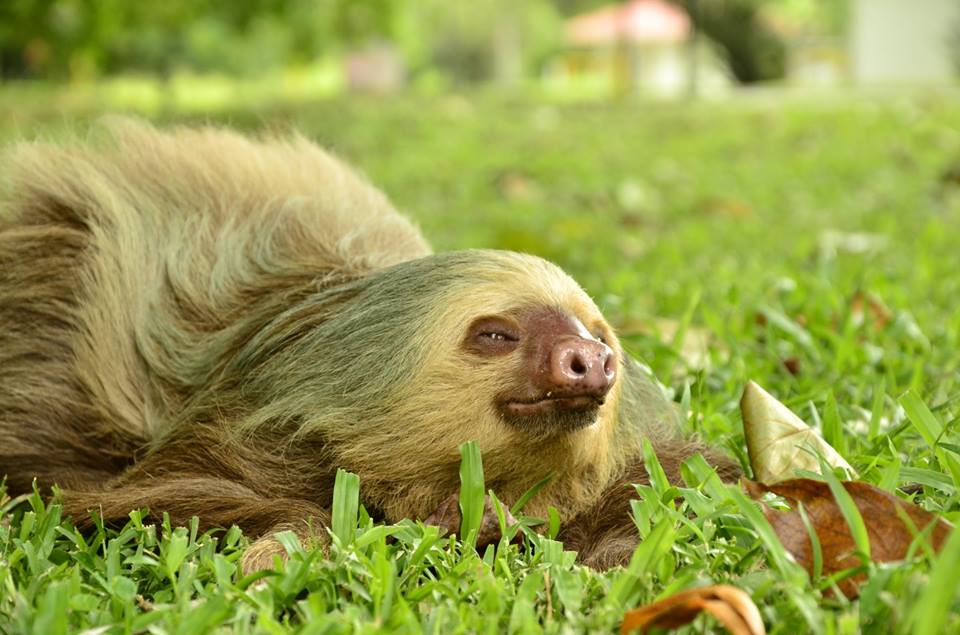The Guácimo Campus is, by many standards, a natural paradise. Located in the tropical rainforest of the Caribbean region, the Campus preserves one of the few remaining continuous forest fragments amid an extensive agricultural and livestock landscape. Walking even a short distance anywhere on the property, you are likely to spot two or three bird species, insects of many colors and sizes, shy deer hiding among the trees, or a family of white-faced capuchin monkeys skillfully leaping from branch to branch. That is why EARTH community members and strategic partners promote research to learn more about bioindicators—key species that reveal the health of ecosystems—and to implement agricultural practices that respect the life cycles and habitats of other species.
Wildlife Monitoring with Camera Traps
One of the projects aimed at better understanding the species inhabiting EARTH’s Guácimo Campus is led by faculty members—mainly Marcos Decker, Professor of Natural Sciences—and fourth-year students enrolled in the Professional Experience course, who lead the Forestry Scenario. For several years other professors, students, and alumni have worked to develop and implement this project. Decker explains that this kind of research must be carried out over a long period to achieve reliable results. “Results don’t come immediately. Monitoring needs to continue throughout an entire annual cycle, since each season changes resource availability and animal behavior. That’s why we compare data year after year—to better understand the ecological dynamics of the campus,” he explains.

Currently, the project operates with 16 camera traps distributed throughout the forest reserve, silvopastoral systems, and the cacao and coffee agroforestry systems located on one of the academic farms. These devices, equipped with motion and infrared sensors, allow for continuous, non-invasive recording of wildlife presence and activity. Thanks to this technology, researchers have documented the presence of various medium- and large-sized mammals, including wild cats such as the jaguar (Panthera onca) and puma (Puma concolor), as well as three primate species: the mantled howler monkey (Alouatta palliata), spider monkey (Ateles geoffroyi), and white-faced capuchin (Cebus capucinus), among many other species of ecological importance for Costa Rica’s Caribbean region.
Additionally, monitoring carried out in the property’s pastures includes evaluating living fences—trees planted as natural boundaries that also function as biological corridors, connecting different forest patches and allowing animals to move freely. The research team reviews thousands of photos processed daily by each camera to analyze behaviors, study habitats, and understand how each species moves across the property.

Bananas and Biodiversity: A Possible Balance
In the middle of the tropical forest also lies the University’s Commercial Banana Operation. In Block Four of this operation, another project complements the efforts of students and faculty: a partnership between EARTH, the World Wildlife Fund (WWF), and the company EDEKA, focused on implementing more sustainable and regenerative agricultural practices across the 234-acre area.
According to Adrián Jiménez, Commercial Crops Manager, the project seeks to reduce chemical loads, protect biodiversity, and measure carbon sequestration in the soil as part of a broader solution to climate change. “Banana cultivation, together with ground cover and canals, can also be a great carbon sink,” he explains. “What we once thought only happened in forests or mountains can also occur here—in well-managed agricultural systems.”

WWF brought in a group of experts on birds, amphibians, mammals, fish, and plants to conduct a detailed species inventory in the areas surrounding the plantation. This record serves as a baseline for comparing future results and measuring whether the implemented practices truly benefit biodiversity. The findings have already surprised researchers: two frog species never before seen near an agricultural plantation were found within the banana fields.
“Biologists call them indicator species,” says Jiménez. “They are organisms highly sensitive to environmental changes. Their presence here tells us the ecosystem is healthy and that the practices are working.” As part of this thorough and meticulous monitoring, researchers identified 130 bird species, 138 fish species, 19 amphibian species, and 23 medium and large mammal species.
With the results obtained so far from both studies, it is evident that the University is not only a center of learning—it is also a refuge for wildlife, a place that respects and protects its natural surroundings. At EARTH, we listen to the language of trees, frogs, and wild cats—all to better understand what ecosystems need to thrive.
